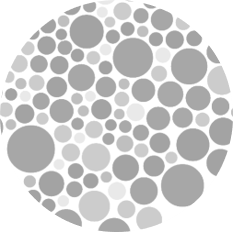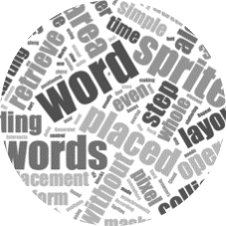
Xingming Jie
Dalian Institute of Chemical Physics
ACS Applied Materials & Interfaces | 2016
Haitao Zhu; Lina Wang; Xingming Jie; Dandan Liu; Yiming Cao
Asymmetric mixed matrix membranes(MMMs) with MOFs hold great application potential for energy-efficient gas separations. However, the particle aggregation and nonselective interfacial microvoids restrict the gas separation performance of asymmetric MMMs. Herein, nanoporous metal-organic framework (MOF) of MIL-53(Al) was modified with aminosilane after solvothermal synthesis. The postfunctionalization by grafting alkyl chains can form hydrogen bonds with polymer chains to enhance the affinity with polymer matrix and facilitate the preferential adsorption of CO2 by dipole-quadrupole interaction with the functional group. Then the postmodified MIL-53(Al) was incorporated as filler into poly(ether imide) Ultem1000 to fabricate high-quality asymmetric MMMs with well dispersed particles in polymer matrix and good adhesion at the MOFs-polymer interface. The Ultem/S-MIL-53(Al) asymmetric MMMs exhibited remarkable combinations of gas permeance and ideal selectivity for CO2/N2 separation at 10 wt % filler loading. The CO2 permeance achieved 24.1 GPU, an increase of 165% compared with pure Ultem membrane. Meanwhile, the ideal CO2/N2 selectivity also increased from 31.0 up to 41.1. The strategy of post covalent modification for MOFs provides an effective way to improve the interfacial affinity and gas separation performance.
RSC Advances | 2016
Haitao Zhu; Xingming Jie; Lina Wang; Guodong Kang; Dandan Liu; Yiming Cao
In this paper the θ-composition for the Ultem®1000/NMP/EtOH ternary phase system was determined firstly and based on this, membranes with different non-solvent ratios (lower, slightly lower, and larger than the θ-composition) were prepared. It was found that dopes with a non-solvent ratio slightly lower than the θ-composition gave membranes the most attractive gas separation performance. Then the metal–organic framework (MOF) of MIL-53 was incorporated into Ultem®1000 to fabricate asymmetric mixed matrix hollow fiber membranes (MMHFMs). MIL-53, which was grouped with EtOH as a non-solvent, turned out to influence the phase inversion more significantly than EtOH did. Similar to the pure Ultem®1000 membrane, MMHFMs formed with the dopant close to the θ-condition for the Ultem®1000/MIL-53/NMP/EtOH phase system possessed the best permeation performance: MMHFMs with 5 wt% MIL-53 loading exhibited an O2 and CO2 permeance of 8.1 GPU and 27.9 GPU, an increase of 138% and 129% respectively compared with the pure Ultem membrane. Meanwhile, the O2/N2 and CO2/CH4 selectivity was almost unchanged. Moreover, the rule was also embodied in MMHFMs with different filler loadings. This study quantitatively revealed the pseudo non-solvent effect of MOFs, which offers an effective method for the fabrication of MMHFMs with a low MOF loading but high performance.
Journal of Natural Gas Chemistry | 2010
Pengfei Ji; Yiming Cao; Xingming Jie; Quan Yuan
Abstract Poly (N, N-dimethylaminoethyl methacrylate)-poly (ethylene glycol methyl ether methacrylate) (PDMAEMA-PEGMEMA) and cesium fluoride (CsF) were blended and used as the separation material of composite membranes. Hollow fiber composite membranes were fabricated by coating the blend on polysulfone (PSf) hollow fiber substrate. Introduction of fluorine ion improved the separation performance of the membrane. The concentration of coating solution was adjusted to obtain a membrane with high permeance. The composite membrane showed good performance with the CO 2 permeance of 30.4 GPU (1 GPU = 10 −6 cm 3 (STP)/(cm 2 ·s·cmHg)), and selectivities to CO 2 /N 2 , CO 2 /CH 4 , CO 2 /H 2 and O 2 /N 2 of 47.2, 37.6, 1.75 and 4.70, respectively. Potassium fluoride (KF), due to its low cost, was also used as a substitute of CsF to prepare composite membrane and the permeation data showed that CsF can be replaced by KF. The effect of operating temperature on the permeation properties of the composite membrane was also investigated.
High Performance Polymers | 2015
Can Jiang; Xingming Jie; Lina Wang; Yili Cheng; Dandan Liu; Jianhui Liu; Yiming Cao
Three novel polymers were synthesized by introducing hexyl, dodecyl, and octadecyl groups to the side chains of poly (2,5-benzimidazole) (ABPBI). Fourier transform infrared, thermal stability, and mechanical strength tests were applied to characterize the three polymers. Elemental analysis was also carried out to determine the degree of substitution. Gas permeation behavior of the three derivative membranes was investigated with pure gas, including hydrogen (H2), nitrogen (N2), oxygen, methane, and carbon dioxide (CO2). The results show that except the hexyl-substituted ABPBI the other two polymers are reverse selective because in both polymers CO2 has a higher permeability than H2. Among the three derivatives, octadecyl-modified ABPBI shows the best permselectivity of gas pairs, such as CO2/N2 (approximately 13) and CO2/H2 (approximately 2.8), with a quite high CO2 permeability (approximately 100 barrer) at 35°C and 3.0 atm.
Journal of Chemistry | 2017
Haitao Zhu; Xingming Jie; Yiming Cao
The metal-organic framework (MOFs) of MIL-53 was functionalized by aminosilane grafting and then incorporated into Ultem®1000 polymer matrix to fabricate mixed matrix hollow fiber membrane (MMHFM) with high separation performance. SEM, XRD, and TGA were performed to characterize the functionalized MIL-53 and prepared MMHFM. The filler particles were embedded in membrane successfully and dispersed well in the polymer matrix. The incorporation of MOFs endowed MMHFM better thermal stability. Moreover, effects of solvent ratio in spinning dope, spinning condition, and testing temperature on gas separation performance of MMHFM were investigated. By optimizing dope composition, air gap distance, and bore fluid composition, MMHFM containing functionalized MIL-53 achieved excellent gas permeance and CO2/N2 selectivity. The CO2 permeance increased from 12.2 GPU for pure Ultem HFM to 30.9 GPU and the ideal CO2/N2 selectivity was enhanced from 25.4 to 34.7 simultaneously. Additionally, gas permeance increased but the selectivity decreased with the temperature increase, which followed the solution-diffusion based transport mechanism.
Journal of Membrane Science | 2007
Guodong Kang; Cong-Jie Gao; Wei-Dong Chen; Xingming Jie; Yiming Cao; Quan Yuan
Journal of Membrane Science | 2006
Hongjian Li; Yiming Cao; Jian-Jun Qin; Xingming Jie; Tonghua Wang; Jianhui Liu; Quan Yuan
Journal of Membrane Science | 2014
Cuijia Duan; Xingming Jie; Dandan Liu; Yiming Cao; Quan Yuan
Journal of Membrane Science | 2014
Xia Li; Yiming Cao; Haijun Yu; Guodong Kang; Xingming Jie; Zhongnan Liu; Quan Yuan
Journal of Membrane Science | 2016
Wu Kuang; Zhongnan Liu; Haijun Yu; Guodong Kang; Xingming Jie; Yan Jin; Yiming Cao



